Browse "Things"
-
Article
Grizzly Bear
The grizzly bear (Ursus arctos horribilis) is a large mammal of the order Carnivora. Grizzly bears are a subspecies of brown bear that lives in North America, with distinct regional populations ranging across western Canada. They are the second largest land carnivore in North America.
"https://d2ttikhf7xbzbs.cloudfront.net/media/media/9e6ac704-cfae-4d7b-8f0b-916349927664.jpg" // resources/views/front/categories/view.blade.php
https://d2ttikhf7xbzbs.cloudfront.net/media/media/9e6ac704-cfae-4d7b-8f0b-916349927664.jpg
-
Article
Grosbeak
Grosbeak is a common name for large members of 2 families of birds, Cardinalidae (cardinal) and Fringillidae (finch).
"https://development.thecanadianencyclopedia.ca/images/tce_placeholder.jpg?v=e9dca980c9bdb3aa11e832e7ea94f5d9" // resources/views/front/categories/view.blade.php
https://development.thecanadianencyclopedia.ca/images/tce_placeholder.jpg?v=e9dca980c9bdb3aa11e832e7ea94f5d9
-
Article
Gross Domestic Product (GDP)
Gross domestic product (GDP) refers to the value of all final goods and services produced within a country by all factors of production, regardless of their ownership, usually during one year. Statistics Canada switched to GDP in their calculations of national production in 1986 to facilitate comparisons with other international statistics as most other countries used GDP. Despite its limitations, GDP is considered the best and most concise overall measure of economic performance. It is often used to calculate changes in a country’s standard of living. The growth of inflation-adjusted GDP (known as real GDP) is an important economic performance indicator. The tracking of GDP over time is used as evidence of business cycle performance, as traditionally two consecutive quarters of negative real GDP growth are referred to as a recession. As well, the distinction is often made between the growth of total real GDP (known as extensive growth) and the growth of real GDP per person (intensive growth), with intensive growth often used as an indicator of welfare per person in an economy.
"https://d2ttikhf7xbzbs.cloudfront.net/media/media/6bd55c36-e3ea-4ede-b4b9-a93257b9f45f.png" // resources/views/front/categories/view.blade.php
https://d2ttikhf7xbzbs.cloudfront.net/media/media/6bd55c36-e3ea-4ede-b4b9-a93257b9f45f.png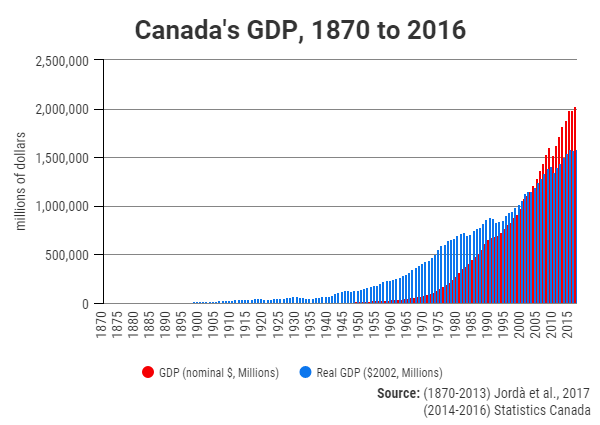
-
Article
Groundsel
Groundsel, or ragwort, common names for plants of genus Senecio, family Compositae or Asteraceae.
"https://d2ttikhf7xbzbs.cloudfront.net/media/media/9a776da6-54b7-4271-b584-7af19ab25d8b.jpg" // resources/views/front/categories/view.blade.php
https://d2ttikhf7xbzbs.cloudfront.net/media/media/9a776da6-54b7-4271-b584-7af19ab25d8b.jpg
-
Article
Groundwater
Groundwater interacts with lakes and rivers as part of the hydrologic cycle. The cycle begins with the formation of clouds through evaporation from the ocean, lakes, rivers, plants and soil.
"https://d2ttikhf7xbzbs.cloudfront.net/media/media/1aa8fafc-a0a0-48c9-86a8-6e588b13ecfe.jpg" // resources/views/front/categories/view.blade.php
https://d2ttikhf7xbzbs.cloudfront.net/media/media/1aa8fafc-a0a0-48c9-86a8-6e588b13ecfe.jpg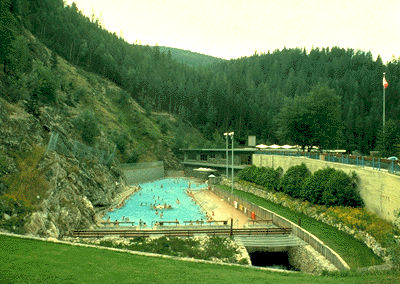
-
Article
Group of Seven
The Group of Seven, also known as the Algonquin School, was a school of landscape painters. It was founded in 1920 as an organization of self-proclaimed modern artists and disbanded in 1933. The group presented the dense, northern boreal forest of the Canadian Shield as a transcendent, spiritual force. Their depictions of Canada’s rugged wind-swept forest panoramas were eventually equated with a romanticized notion of Canadian strength and independence. Their works were noted for their bright colours, tactile paint handling, and simple yet dynamic forms. In addition to Tom Thomson, David Milne and Emily Carr, the Group of Seven were the most important Canadian artists of the early 20th century. Their influence is seen in artists as diverse as abstract painter Jack Bush, the Painters Eleven, and Scottish painter Peter Doig.
"https://d2ttikhf7xbzbs.cloudfront.net/media/media/8b176fb1-c3cb-418c-a75f-a4c425f928d0.jpg" // resources/views/front/categories/view.blade.php
https://d2ttikhf7xbzbs.cloudfront.net/media/media/8b176fb1-c3cb-418c-a75f-a4c425f928d0.jpg
-
Editorial
The Inspiration of the Group of Seven
The following article is an editorial written by The Canadian Encyclopedia staff. Editorials are not usually updated.
"https://development.thecanadianencyclopedia.ca/images/tce_placeholder.jpg?v=e9dca980c9bdb3aa11e832e7ea94f5d9" // resources/views/front/categories/view.blade.php
https://development.thecanadianencyclopedia.ca/images/tce_placeholder.jpg?v=e9dca980c9bdb3aa11e832e7ea94f5d9
-
Article
Grouse
The Grouse (Tetraonidae) is a small subfamily (18 species) of chickenlike birds with circumpolar distribution above latitude 26° north.
"https://d2ttikhf7xbzbs.cloudfront.net/media/media/99149971-fea4-445a-8bfe-58335a68e67f.jpg" // resources/views/front/categories/view.blade.php
https://d2ttikhf7xbzbs.cloudfront.net/media/media/99149971-fea4-445a-8bfe-58335a68e67f.jpg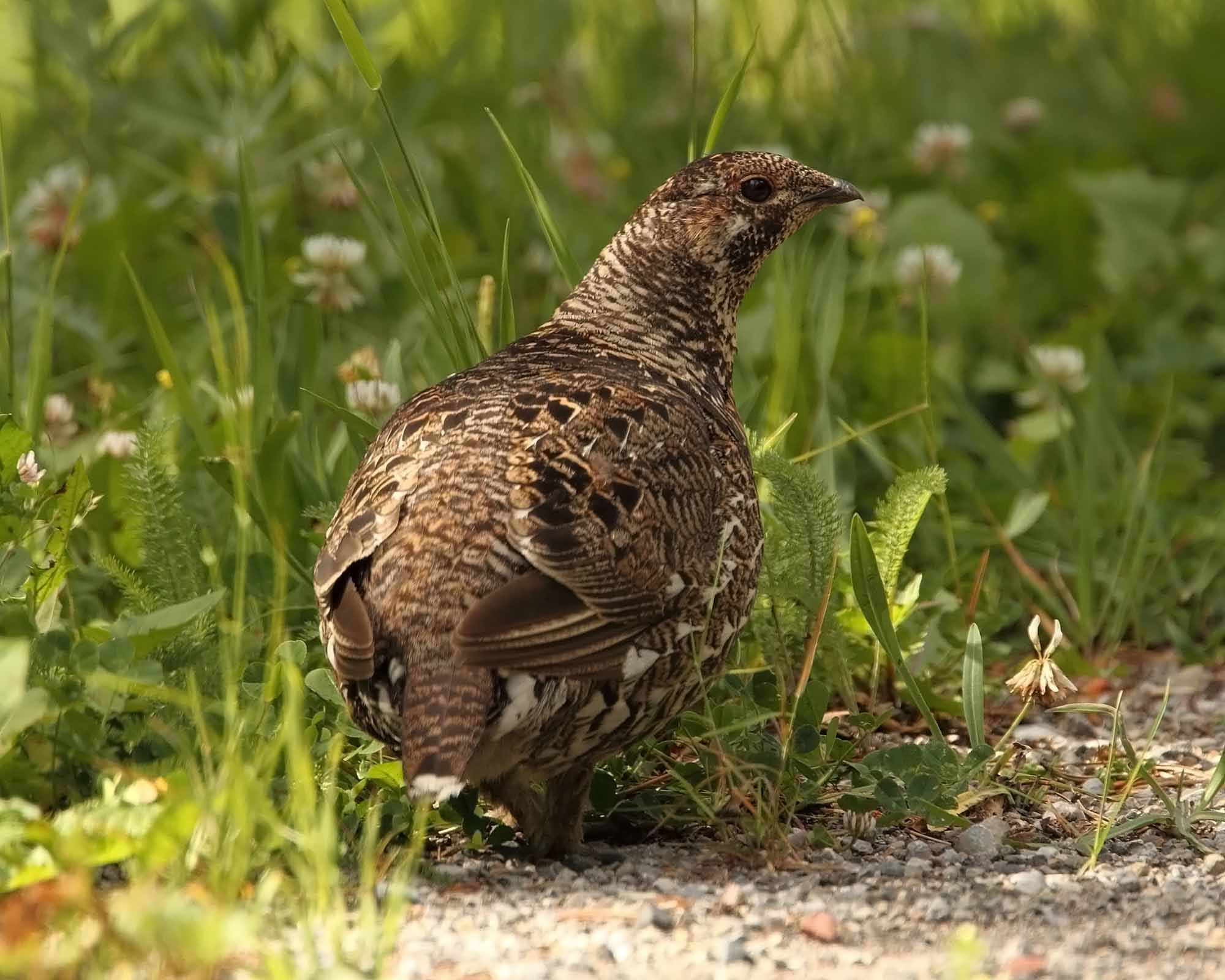
-
Article
GRT of Canada Ltd
GRT of Canada, Ltd. Record company, active 1969-79. It was established in London, Ont, as a subsidiary of General Recorded Tape of California.
"https://development.thecanadianencyclopedia.ca/images/tce_placeholder.jpg?v=e9dca980c9bdb3aa11e832e7ea94f5d9" // resources/views/front/categories/view.blade.php
https://development.thecanadianencyclopedia.ca/images/tce_placeholder.jpg?v=e9dca980c9bdb3aa11e832e7ea94f5d9
-
Macleans
GST Harmonized in Atlantic
Frank McKenna had a big smile on his face, and a new spin on a familiar sales pitch. In a national newspaper advertisement that appeared late last week, the New Brunswick premier told readers across the country that "the best place in Canada to do business keeps getting better and better.This article was originally published in Maclean's Magazine on May 6, 1996
"https://development.thecanadianencyclopedia.ca/images/tce_placeholder.jpg?v=e9dca980c9bdb3aa11e832e7ea94f5d9" // resources/views/front/categories/view.blade.php
https://development.thecanadianencyclopedia.ca/images/tce_placeholder.jpg?v=e9dca980c9bdb3aa11e832e7ea94f5d9
-
Article
Guarantee Act
Guarantee Act, 1849, conceived by Francis HINCKS and carried in the Legislative Assembly of the Province of Canada, established the principle of government assistance to railways. Under the terms of the Act, any railway more than 75 mi (120 km) long was eligible for a government guarantee on the interest of half its bonds as soon as half the line had been completed.
"https://d2ttikhf7xbzbs.cloudfront.net/media/media/e75f49df-4ccf-4613-bcbb-01819f3f0479.jpg" // resources/views/front/categories/view.blade.php
https://d2ttikhf7xbzbs.cloudfront.net/media/media/e75f49df-4ccf-4613-bcbb-01819f3f0479.jpg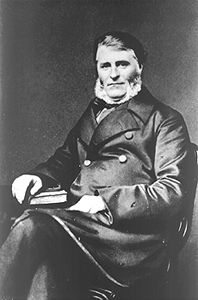
-
Article
Guelph in the First World War
Guelph, Ontario, was typical of small Canadian cities during the First World War. Of its population of about 16,000, more than a third, 5,610, volunteered for military service; 3,328 were accepted. Today, 216 of their names are engraved on the city’s cenotaph. While Guelphites served overseas, the war had a profound and lasting effect on their hometown — an experience that provides an insight into wartime Canada.
"https://d2ttikhf7xbzbs.cloudfront.net/media/media/e38f8065-b481-40c7-9d21-690d7e0a84dc.jpg" // resources/views/front/categories/view.blade.php
https://d2ttikhf7xbzbs.cloudfront.net/media/media/e38f8065-b481-40c7-9d21-690d7e0a84dc.jpg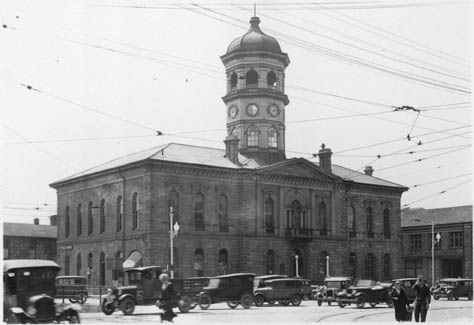
-
"https://development.thecanadianencyclopedia.ca/images/tce_placeholder.jpg?v=e9dca980c9bdb3aa11e832e7ea94f5d9" // resources/views/front/categories/view.blade.php
https://development.thecanadianencyclopedia.ca/images/tce_placeholder.jpg?v=e9dca980c9bdb3aa11e832e7ea94f5d9
-
Article
Guerin Case
The Guerin case (R. v. Guerin) resulted in a pivotal decision by the Supreme Court of Canada in 1984 about Indigenous rights. It centred on the fiduciary (guardian or trustee) responsibility of the Crown to consult openly and honestly with Indigenous peoples before making arrangements for the use of their land. (See also Duty to Consult.) For the first time, it established that the Crown has a legal responsibility to First Nations and not simply a moral one. It also recognized Aboriginal title to their land to be a sui generis (Latin for “unique”) right.
"https://d2ttikhf7xbzbs.cloudfront.net/787b0637-ecea-46b2-bdd4-801e175a39b3.jpg" // resources/views/front/categories/view.blade.php
https://d2ttikhf7xbzbs.cloudfront.net/787b0637-ecea-46b2-bdd4-801e175a39b3.jpg
-
Macleans
Guess Guilty of Obstruction
This article was originally published in Maclean’s magazine on July 1, 1998. Partner content is not updated.
"https://development.thecanadianencyclopedia.ca/images/tce_placeholder.jpg?v=e9dca980c9bdb3aa11e832e7ea94f5d9" // resources/views/front/categories/view.blade.php
https://development.thecanadianencyclopedia.ca/images/tce_placeholder.jpg?v=e9dca980c9bdb3aa11e832e7ea94f5d9
